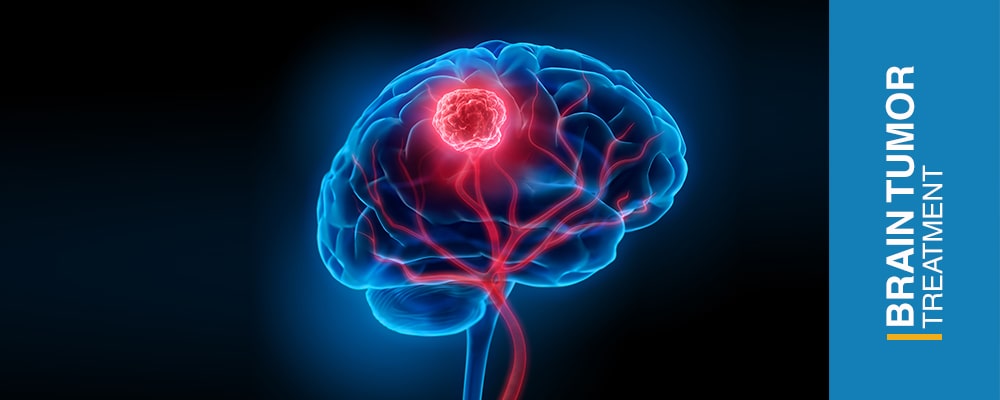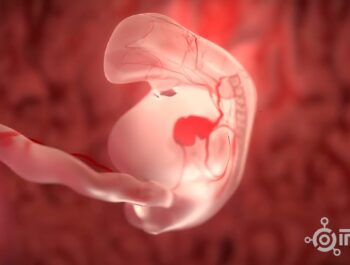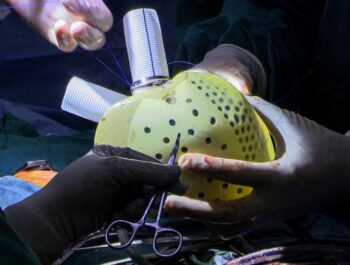
What is a brain tumor?
6min ReadA brain tumor is a collection, or mass, of abnormal cells in your brain. Your skull, which encloses your brain, is very rigid. Any growth inside such a restricted space can cause problems. Many different types of brain tumors exist. Some brain tumors are noncancerous (benign), and some brain tumors are cancerous (malignant). Brain tumors can begin in your brain (primary brain tumors), or cancer can begin in other parts of your body and spread to your brain (secondary, or metastatic, brain tumors).
Types of brain tumors
Primary brain tumors
Primary brain tumors originate in your brain. They can develop from your:
- brain cells
- the membranes that surround your brain, which are called meninges
- nerve cells
- glands
Primary tumors can be benign or cancerous. In adults, the most common types of brain tumors are gliomas and meningiomas.
Gliomas
Gliomas are tumors that develop from glial cells. These cells normally:
- support the structure of your central nervous system
- provide nutrition to your central nervous system
- clean cellular waste
- break down dead neurons
Gliomas can develop from different types of glial cells. The types of tumors that begin in glial cells are:
- astrocytic tumors such as astrocytomas, which originate in the cerebrum
- oligodendroglial tumors, which are often found in the frontal temporal lobes
- glioblastomas, which originate in the supportive brain tissue and are the most aggressive type
Other primary brain tumors
Other primary brain tumors include:
- pituitary tumors, which are usually benign
- pineal gland tumors, which can be benign or malignant
- ependymomas, which are usually benign
- craniopharyngiomas, which occur mostly in children and are benign but can have clinical symptoms like changes in vision and premature puberty
- primary central nervous system (CNS) lymphomas, which are malignant
- primary germ cell tumors of the brain, which can be benign or malignant
- meningiomas, which originate in the meninges
- schwannomas, which originate in cells that produce the protective cover of your nerves (myelin sheath) called Schwann cells
Most meningiomas and schwannomas occur in people between the ages of 40 and 70. Meningiomas are more common in women than men. Schwannomas occur equally in both men and women. These tumors are usually benign, but they can cause complications because of their size and location. Cancerous meningiomas and schwannomas are rare but can be very aggressive.
Secondary brain tumors
Secondary brain tumors make up the majority of brain cancers. They start in one part of the body and spread, or metastasize, to the brain. The following can metastasize to the brain:
- lung cancer
- breast cancer
- kidney cancer
- skin cancer
Secondary brain tumors are always malignant. Benign tumors don’t spread from one part of your body to another.
Risk factors
Family history
Only about 5 to 10 percent of all cancers are genetically inherited, or hereditary. It’s rare for a brain tumor to be genetically inherited. Talk to your doctor if several people in your family have been diagnosed with a brain tumor. Your doctor can recommend a genetic counselor for you.
Age
Risk for most types of brain tumors increases with age.
Chemical exposure
Being exposed to certain chemicals, such as those you might find in a work environment, can increase your risk for brain cancer.
Exposure to radiation
People who have been exposed to ionizing radiation have an increased risk of brain tumors. You can be exposed to ionizing radiation through high-radiation cancer therapies. You can also be exposed to radiation from nuclear fallout. The nuclear power plant incidents in Fukushima and Chernobyl are examples of how people can be exposed to ionizing radiation.
No history of chicken pox
According tothe American Brain Tumor Association, people with a history of childhood chicken pox have a decreased risk of getting brain tumors.
Symptoms
Symptoms of brain tumors depend on the location and size of the tumor. Some tumors cause direct damage by invading brain tissue and some tumors cause pressure on the surrounding brain. You’ll have noticeable symptoms when a growing tumor is putting pressure on your brain tissue.
Headaches are a common symptom of a brain tumor. You may experience headaches that:
- are worse in the morning when waking up
- occur while you’re sleeping
- are made worse by coughing, sneezing, or exercise
You may also experience:
- New onset or change in pattern of headaches
- Headaches that gradually become more frequent and more severe
- Unexplained nausea or vomiting
- Vision problems, such as blurred vision, double vision or loss of peripheral vision
- Gradual loss of sensation or movement in an arm or a leg
- Difficulty with balance
- Speech difficulties
- Confusion in everyday matters
- Personality or behavior changes
- Seizures, especially in someone who doesn’t have a history of seizures
- Hearing problems
Diagnosis
Diagnosis of a brain tumor begins with a physical exam and a look at your medical history. The physical exam includes a very detailed neurological examination. Your doctor will conduct a test to see if your cranial nerves are intact. These are the nerves that originate in your brain. Your doctor will look inside your eyes with an ophthalmoscope, which is an instrument that shines a light through your pupils and onto your retinas. This allows your doctor to check how your pupils react to light. It also allows your doctor to look directly into your eyes to see if there’s any swelling of the optic nerve. When pressure increases inside the skull, changes in the optic nerve can occur.
The doctor may also evaluate your:
- muscle strength
- coordination
- memory
- ability to do mathematical calculations
Your doctor may order more tests after they finish the physical exam. These could include:
CT scan of the head
CT scans are ways for your doctor get a more detailed scan of your body than they could with an X-ray machine. This can be done with or without contrast. Contrast is achieved in a CT scan of the head by using a special dye that helps doctors see some structures, like blood vessels, more clearly.
MRI of the head
If you have an MRI of your head, a special dye can be used to help your doctor detect tumors. An MRI is different from a CT scan because it doesn’t use radiation, and it generally provides much more detailed pictures of the structures of the brain itself.
Angiography
This study uses a dye that’s injected into your artery, usually in the groin area. The dye travels to the arteries in your brain. It allows your doctor to see what the blood supply of the tumors looks like. This information is useful at the time of surgery.
Skull X-rays
Brain tumors can cause breaks or fractures in the bones of the skull, and specific X-rays can show if this has occurred. These X-rays can also pick up calcium deposits, which are sometimes contained within a tumor. Calcium deposits may be in your bloodstream if your cancer has moved to your bones.
Biopsy
A small piece of the tumor is obtained during a biopsy. A specialist called a neuropathologist will examine it. The biopsy will identify if the tumor cells are benign or malignant. It will also determine whether the cancer originated in your brain or another part of your body.
Treatment
The treatment of a brain tumor depends on:
- the type of tumor
- the size of the tumor
- the location of the tumor
- your general health
The most common treatment for malignant brain tumors is surgery. The goal is to remove as much of the cancer as possible without causing damage to the healthy parts of the brain. While the location of some tumors allows for easy and safe removal, other tumors may be located in an area that limits how much of the tumor can be removed. Even partial removal of brain cancer can be beneficial.
Risks of brain surgery include infection and bleeding. Clinically dangerous benign tumors are also surgically removed. Metastatic brain tumors are treated according to guidelines for the type of original cancer. Surgery can be combined with other treatments, such as radiation therapy and chemotherapy. Physical therapy, occupational therapy, and speech therapy can help you to recover after neurosurgery.













Reviews
Number of pending reviews175